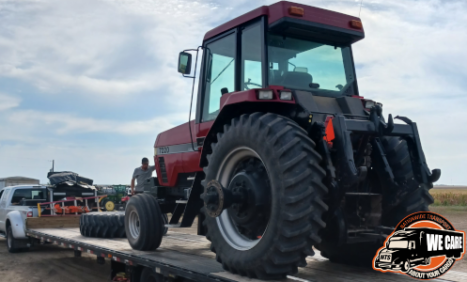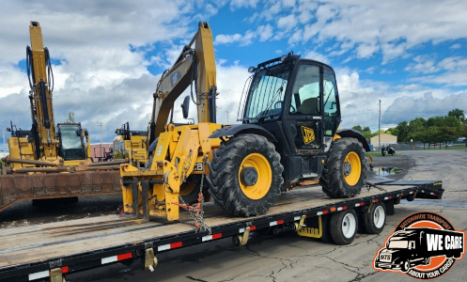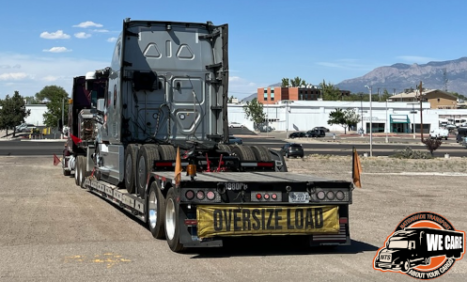Many companies need to ship freight from one area to another. Whether your business sells general goods, cars or specialized appliances and electronics, you can use drayage services to increase your productivity and improve shipping at every step. Start by learning the drayage definition and the types of drayage services you can use.
What Is Drayage Trucking?
Drayage trucking and shipment services involve transporting products over short distances. While the goods may become part of a longer movement overall, drayage trucking ensures speed and efficiency. If your company wants to transport a freight container from a ship to a nearby warehouse, drayage services can simplify this process.
Often, businesses use drayage trucking when moving products across short distances — for example, locations between one to two hours apart. The sites are usually in the same geographical area, such as taking a freight container from a nearby port to a drayage truck or shipping products from the port to a nearby railway system.
In other cases, companies use drayage services for round-trip needs, like bringing a container back to a port. Many ports require quick container returns, so drayage services are valuable in making those short trips in record time.
Drayage trucking operations begin when the truck first reaches its destination and workers unload the products from the container. Once the container is empty, it can return to its port. Often, teams will load the container back onto a steamship to retrieve more products. Immediately returning empty containers to the exporter ensures smooth operations.
The Importance of Drayage?
Drayage plays a vital role in shipping and transportation logistics. Today, companies must work harder than ever to meet customer demands across a growing global network. The more customers they need to serve globally, the more urgent the shipment process will be.
Due to high demand and the expectation of fast shipments, ensuring product flow is essential to maintaining customer satisfaction. When goods take a long time to reach their destination, customers must wait until the product arrives in their hands. Many companies appreciate that drayage services allow them to avoid bottlenecking and congestion in critical areas, such as ports, docks or rail systems.
Drayage services may also reduce the cost of transportation and container usage. Many companies prefer to use containers between the freight’s origin and destination. For example, businesses may need to move large loads of steel, metal, cars or other heavy objects across long distances. Containers are one of the only ways to transport these products.
However, shipping companies need their containers back. The solution? Drayage services. By transporting the products short distances and unloading them at a secondary location, your company can return the shipment container without incurring hefty detention and demurrage fees.
If you still encounter late fees, try asking a drayage broker for assistance. They can determine the most time-efficient methods to save you money and help you develop good relationships with the shipment companies.
When Would I Need Drayage Services?
You may need drayage services to transport a shipment between intermodal points, which are the areas between a port, dock or railyard and your company’s warehouse. Drayage services can help companies that typically make consistent shipments over time, such as retail clothing or e-commerce businesses.
Another reason to use drayage services is when you need to receive deliveries at a shopping mall or trade show. Trade shows exhibit companies’ products, while malls sell products from various businesses in one self-contained area. Any trade show relies on timely movements, often of large containers or heavy goods. Trade show workers depend on drayage services to quickly transport shipments from the port, dock or railway to the warehouse and the show venue.
Shopping malls often have a single loading dock to receive and unload products from various companies. Coordinating pickups and drop-offs are essential to creating smooth operations at the mall. Many companies like to use drayage at malls, making transportation efficient and helping reduce congestion in critical areas.
Drayage and Intermodal Shipping
Intermodal shipping is another method for moving products and goods. The technique uses the same shipping containers and transports them across different modes. For example, a product may begin on a truck and move to a rail system. Once the product reaches its final destination, another truck will wait to complete the shipment by road. Intermodal shipping usually describes any form of shipment that uses two or more shipping modalities while the goods remain in the same container.
Drayage plays an essential role in intermodal shipping. Because the products must travel between different points, a drayage service can help speed up the process and ensure the container arrives quickly and efficiently. It also ensures your company maintains consistency and productivity. When you eliminate the loading and unloading process and directly transport goods in the same container, your business can get products to their destination faster.
These are some benefits of using intermodal shipping and drayage.
- Cost: Intermodal shipping and drayage services can decrease costs associated with hauls and trucking.
- Efficiency: Your company will use less fuel due to the expedited process.
- Capacity: Shipments and transportation can increase capacity by quickly and efficiently delivering freights.
- Sustainability: Your company will use less fuel, making intermodal shipping better for the environment.
Different Types of Drayage Classifications
Your company can consider several different drayage classifications. Here are six types of drayage and their uses.
1. Expedited Drayage
Expedited drayage transports freight containers quickly for time-sensitive shipments. Many e-commerce companies use expedited drayage services. For example, companies transporting perishable or temperature-controlled products may use expedited transportation to ensure safe and fast deliveries.
2. Intercarrier Drayage
Intercarrier drayage services move goods between different modes or carriers. You might haul goods from a truck to a railway station or dock.
3. Intracarrier Drayage
Intracarrier drayage services convey goods from a freight container to two locations, frequently owned by the same company. A business might move specialized products from a centralized hub to a railway station or a pier.
4. Pier Drayage
Pier drayage services transport goods from rail terminals, piers or shipping docks. Trucks will often use the highway to shuttle products across short distances from a point of origin to a pier or dock.
5. Shuttle Drayage
Shuttle drayage services ship products from an intermodal point to a temporary location or stop, which often happens with an overcrowded point of origin. Many shopping malls use this method to decrease congestion around product drop-off spots.
6. Door-to-Door Drayage
Door-to-door drayage services transfer goods directly from the container to a retail customer. If your company receives a high number of retail products, you might use door-to-door drayage transportation to increase productivity and deliveries.
Learn More About Nationwide Transport Services’ Drayage Operations
Nationwide Transport Services offers logistics planning for clients who need assistance with drayage services. We offer custom transportation solutions with trained specialists who understand your wants and needs.
Our company can help you find new crews and reliable equipment for your shipping services. Specialists can assist in clerical work like gathering paperwork and permits for shipping containers and drayage trucks. We also provide pilot cars and escort vehicles for short drayage operations when you need to smooth your processes quickly. Contact us today to speak with a Nationwide Transport Services representative and receive a quote, or call us at 877-278-3135.


